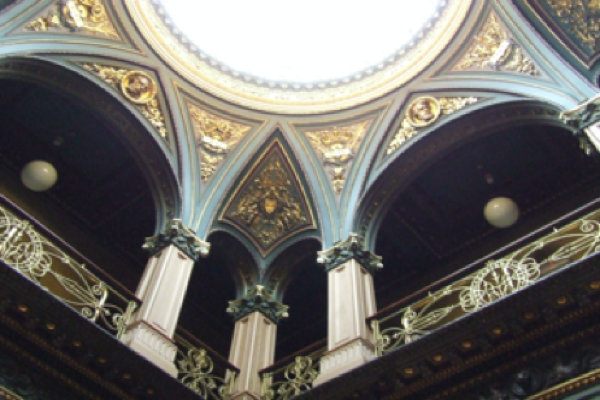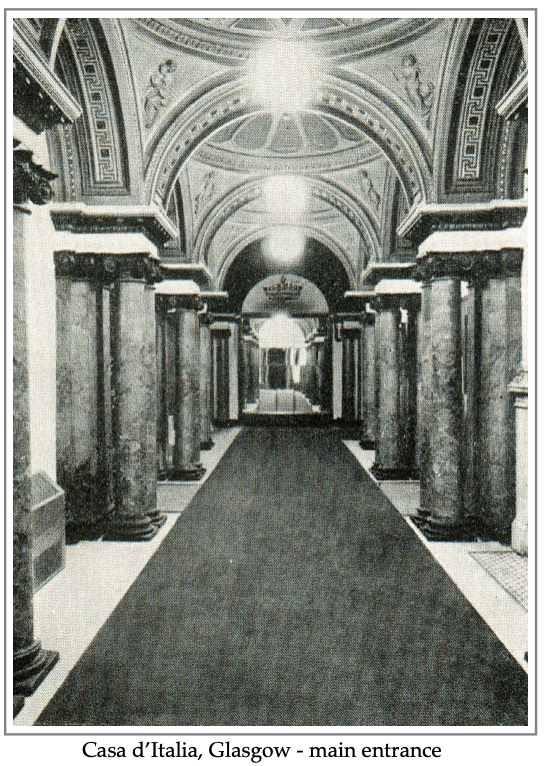
Casa d'Italia and the 'Fascio'
Glasgow
Alfonso Pacitti
10 Jul, 2014 09:32 am
The Casa d'Italia in Scotland first opened its doors in 1935; a landmark building lined with marble colonnades located at 22 Park Circus, Glasgow. The house was originally built in 1874 for Walter Macfarlane, a wealthy Glasgow industrialist and founder of the Saracen Foundry, and subsequently modernised in 1899. Casa d'Italia Ltd was incorporated in 1935 to take over the premises and administer it on behalf of the Italian community in Glasgow. The company was a limited liability company but acted as a private members club. Membership was open to any one of Italian descent upon application to the directors and payment of an annual subscription.

The Casa acted as centre for the Italian community and offered a social club, society dinners and language classes. It actively sought to promote Italian culture and identity.
Testament to the people at the time was that the building was purchased through contributions from within the Scottish Italian community. Much needed repairs were carried out by Scottish-Italian skilled labourers and artists.
Many Italian dignitaries, including high ranking officials coming to Scotland, almost always visited the Casa d'Italia in their professional capacity.
The founding of the Casa can be credited to the ‘Fascio’, an organisation created in Glasgow (and London) in 1922 consisting of WWI veterans. It was based on the ideology of the fascist movement that was emerging in Italy at the time.
The fascio was also responsible for the creation of the Union of Italian Traders in 1928. Within ten years it boasted 1000 members in Scotland alone and was the first organisation that actively brought many Scottish based Italians together on this scale. There were also Fascio societies located in Edinburgh at Picardy Place, and at Stirling with additional representatives in Motherwell, Paisley and Coatbridge.
The Casa also acted as a beacon for all Italians living in Scotland, a focal point where many regularly met socially and for business, travelling from all corners of the country.
The ‘dopolavoro’ (after work) club was an integral element, which often organised dinner dances and the screening of Italian films. The Casa introduced an evening school to teach Italian to children.
Unfortunately the Casa closed its doors for the last time in 1989, bankrupt and in a state of disrepair. Liquidators sold the Grade A listed building in 1990 and Casa d'Italia Ltd was finally dissolved in 1998.
The main reasons for the closure were twofold; firstly, members struggled with the level of annual subscriptions — between £20 and £120; and secondly, the Italian Consul (which had been housed in the Casa) left Glasgow to set up office in Edinburgh. This loss of this rental income was a severe blow since it was a valuable contribution towards the significant rates payment, as the Casa was located in the prestigious Park Circus area of Glasgow. The building is now used as a very impressive Civil Registry for wedding ceremonies.